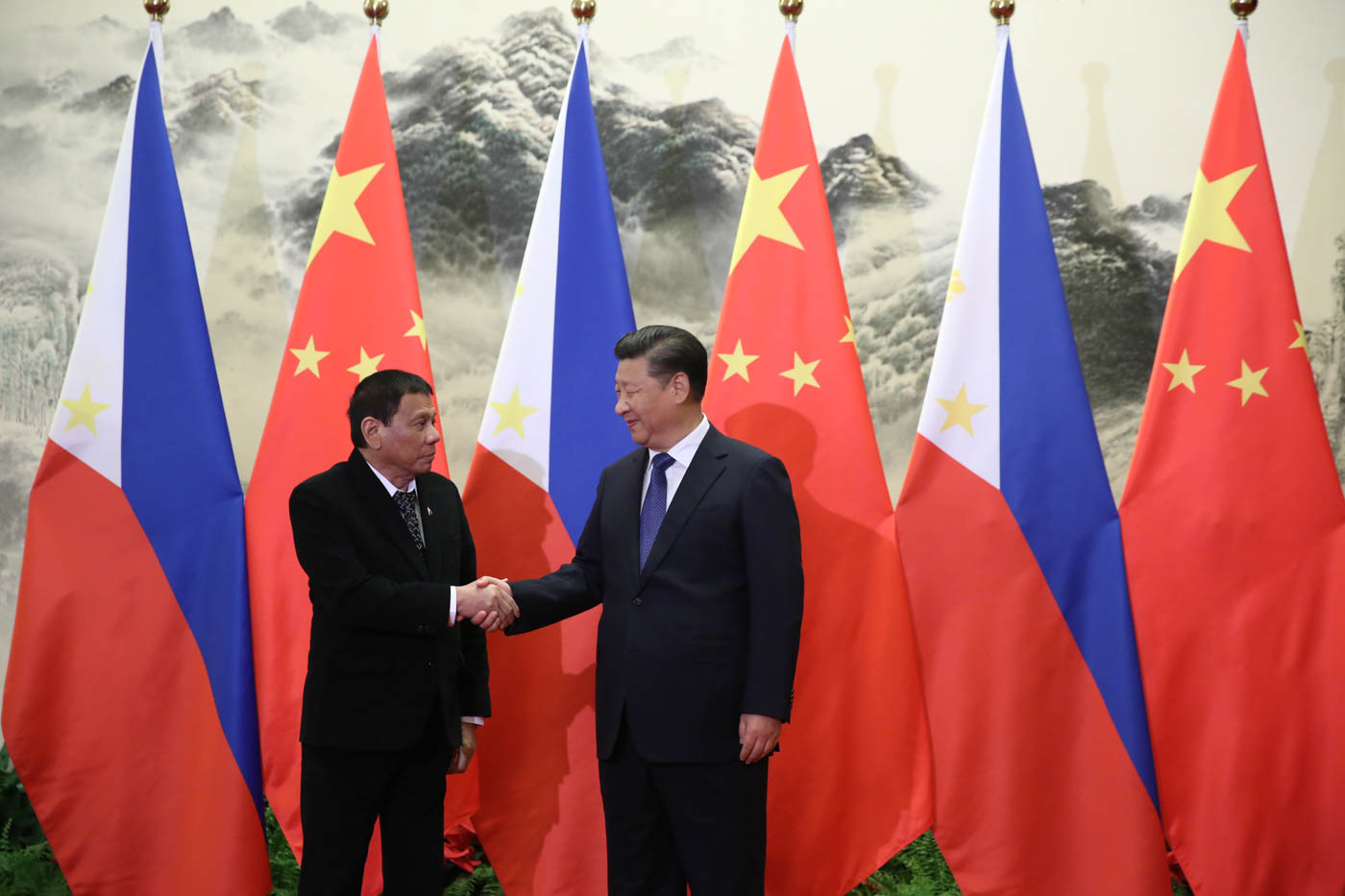
Over the past year, the relatively obscure Benham Rise, a plateau located in the Philippine Sea, has progressively become a main point of contention between Manila and Beijing.
Lying at the heart of the Western Pacific, the Benham Rise is part of the Philippines’ extended continental shelf. Emboldened by the Philippines’ strategic accommodation under President Rodrigo Duterte, however, China is pushing the boundaries of its strategic adventurism into the area.
In response, the Philippine government has come under vehement pressure, including from prominent lawmakers and magistrates, to take a tougher stance against its newfound strategic partner. There have also been public rallies calling for the Duterte administration to push back against Chinese creeping maritime presence in Philippine waters.
After months of rapidly warming relations, the Philippines and China have once again found themselves in the middle of a maritime spat. Despite his best efforts, Duterte has struggled to convince the Philippine public to accommodate China’s perceived encroachment into Philippine waters.
Policy Recalibration
In 2012, a United Nations (UN) ruling affirmed the Philippines’ exclusive sovereign rights over “mineral and other non-living resources of the seabed and subsoil together with living organisms belonging to sedentary species” in the area.
Based on the UN Convention on the Law of the Sea (Art. 76), the decision is “final” and “binding” on all signatories to the Convention, including China. Article 77 of the UNCLOS gives a coastal state, in this case the Philippines, exclusive sovereign rights over its continental shelf for the purpose of "exploring it and exploiting its natural resources."
Earlier this year, the Duterte administration came under fire for giving a Chinese institute a permit, for the first time in years, to conduct scientific research in the Benham Rise, while rejecting a similar application by a European company. Supreme Court Justice Antonio Carpio, a prominent voice on the South China Sea issues, described the move as “dumb,” given huge questions over China’s intentions. Last year, Philippine Defense Secretary Delfin Lorenzana suggested that China may be interested in monitoring the area for submarine deployment.
Some strategists suspect that the Asian powerhouse seeks to place sensors to track the movement of American naval assets in the Western Pacific, as it has done in Guam, in order to protect its own burgeoning submarine fleet, which has expanded its operations across both the Pacific and Indian oceans.
The Benham Rise, a 13-million-hectare undersea region, is also rich in mineral resources, including energy-rich deposits of methane hydrate. China could also be interested in securing a hold on those precious deposits. More fundamentally, the Benham Rise falls within the China’s so-called “Second Island Chain,” which covers huge portions of the Western Pacific.
With Beijing consolidating its domination of the so-called “First Island Chain,” which covers both the East and South China Seas, it may gradually move to enhance its military position in the Philippine Sea and the Pacific. This way, it can assert its naval primacy in the area as well as create a maritime buffer zone against challenges from America and its major regional allies.
A Troubled Friendship
China, however, maintains that its activities in the area are in compliance with international law and Beijing’s rights under UNCLOS, particularly the right to freedom of navigation in international waters. In order to prevent further tensions in bilateral relations, Chinese Foreign Ministry Spokesperson Geng Shuang claimed that (on February 6) the MSR wasn’t conducted in the Benham Rise. But the University of the Philippines Marine Science Institute (UP MSI), which was the local partner of the Chinese researchers in the area, said that the MSR was conducted in the "northeastern Philippines where the Philippine Rise (Benham Rise) is located."
The Philippine public continues to seethe over the issue. In recent days, experts in Manila revealed that Beijing unilaterally named five undersea features in the Benham Rise at the International Hydrographic Organization (IHO). Some fear that naming features within the Philippines’ exclusive economic zone could serve as a prelude to more assertive Chinese claims over time. The revelation provoked a new wave of criticism, including from a prominent senator, directed at the Duterte administration’s perceived acquiesce amid Chinese creeping maritime presence.
"The Philippine Rise or the Benham Rise is ours," declared Duterte in a high-profile speech in his hometown in Davao City, a speech intended to contain public backlash over the issue. Presidential spokesperson Harry Roque said that the government will “object and d[oes] not recognize the Chinese names given to some undersea features in the Philippine Rise.”
Intent on shoring up his patriotic credentials, Duterte has renamed the undersea plateau “The Philippine Rise,” a concession to the nationalist lobby at home. The president has also instructed the Philippine Navy to better guard the area and establish a more permanent presence in the Benham Rise.
Duterte imposed new restrictions on handing Marine Scientific Research (MSR) permits to foreign entities, including from China. But the Philippines has also been perturbed by China’s virtual completion of a sprawling network of military bases and facilities across the Spratly chain of islands. This, according to some Filipino officials, contradicts an earlier promise by China not to militarize the disputes.
In a move that is likely to irk China, the Philippines is expected to move ahead with fortifying its own facilities in the area. Defense chief Lorenzana confirmed to this author that the country will upgrade its airstrip and military facilities in the Thitu Island later this year. The Philippine-controlled island is the second largest naturally-formed land feature in the Spratlys, a collection of islets and rocks claimed entirely by China.
Thanks to Beijing’s expanding maritime appetite, China is beginning to risk its newfound rapprochement with the Philippines, where the defense establishment and broader public remain deeply skeptical of warming ties with China.



